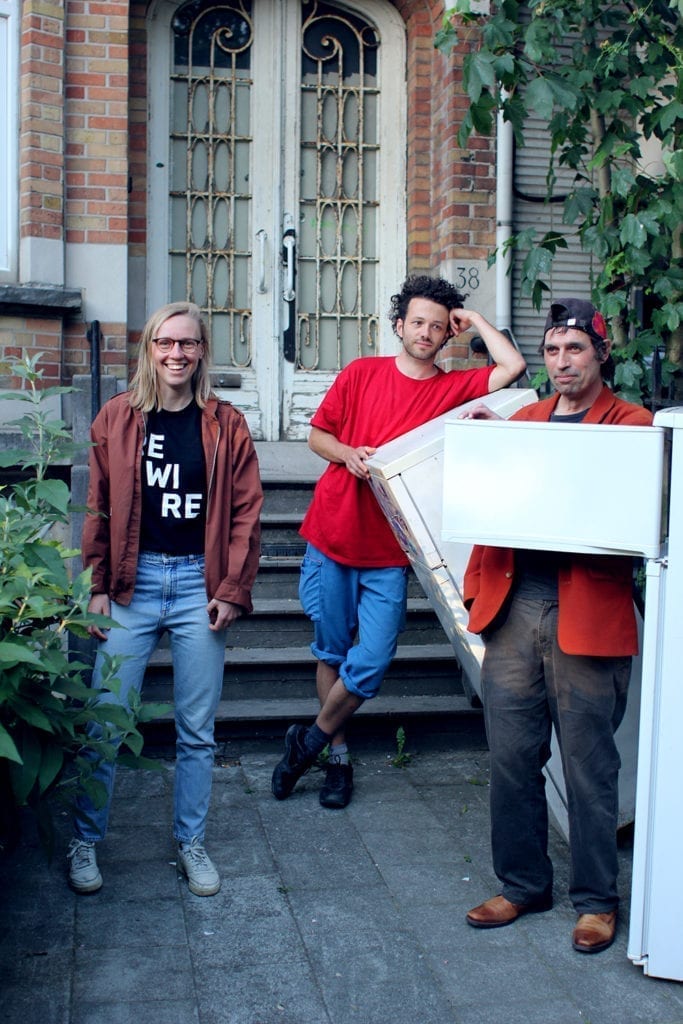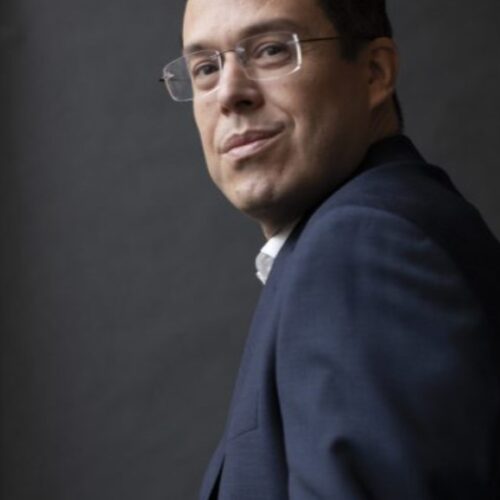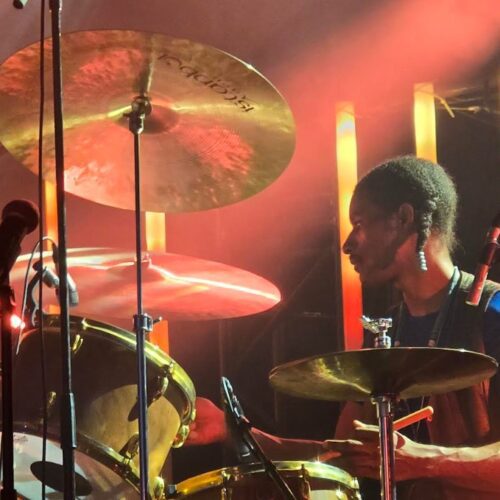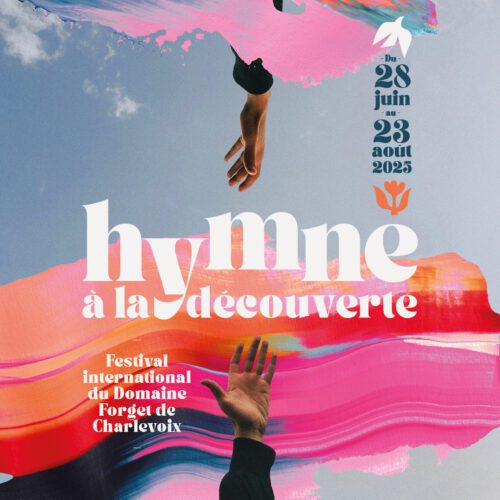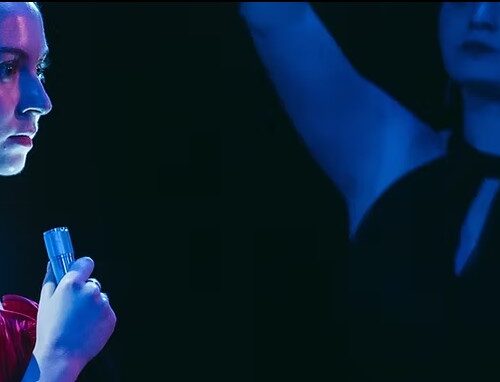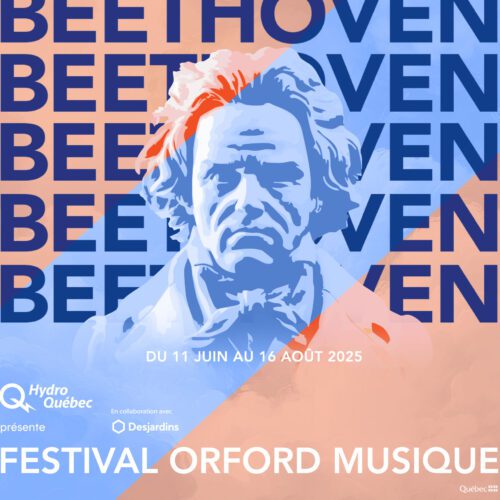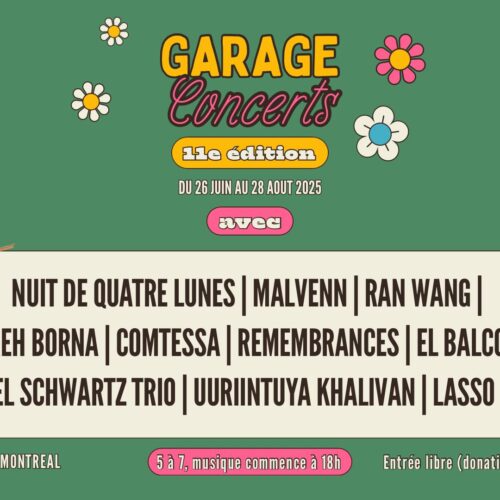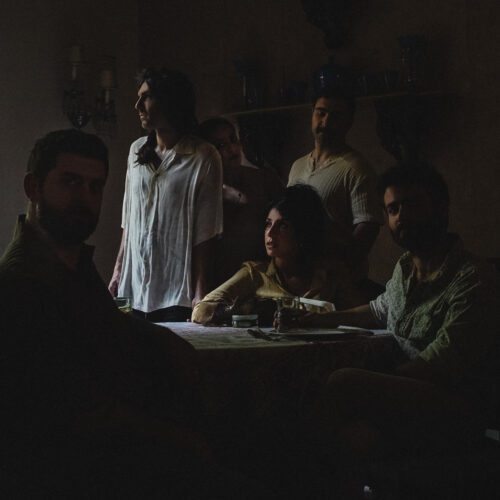Additional Information
Photos: Emma George
PAN M 360: I understand you already knew each other from the Brussels scene, but that schroothoop came into existence on a bit of a crazy impulse.
Timo Vantyghem (bass & clarinet): True, it all kind of started as a joke, nothing really serious. For several years, we have been playing together in La Clinik Du Dr. Poembak, a local brass band in Brussels. Last winter, I noticed there were still some open slots for a local jam session in Brussels. So I contacted Rik and Margo to see whether we could put together a small act or play some music. I knew Rik has been building homemade instruments from recuperated materials for many years. And coincidentally, Margo was constructing a drum kit from illegally dumped garbage at that same time. We decided to gather our junk and improvise our way through the night. We had such a blast during that jam session that we decided to play some more gigs. Since we did not have enough songs to fill one-hour concerts, we mainly played songs with lots of room for improvisation. That’s how schroothoop came into being.
Margo Maex (percussion): A few weeks after our first jam session, a couple of friends proposed to record some of our work, and eventually we ended up recording a mini-album, called Klein Gevaarlijk Afval – Dutch for domestic hazardous waste, like batteries, white spirits, or other chemical waste that cannot be discarded in normal garbage.
PAN M 360: Schroothoop’s music is basically, to my ear, mysterious but playful jazz, incorporating sounds and ideas from other global styles. How would you describe your recipe?
Rik Staelens (wind & string instruments): Living in a multicultural city like Brussels, we are exposed to all kinds of music. On the radio we mainly hear pop and rock, a bit of jazz, blues, and Western classical music. But out on the streets – or in our backyards – we can also hear Moroccan chaabi, Andalusian or Egyptian classical music, rai, Turkish melodies, Balkan, Bollywood songs, West African rhythms… It comes quite natural to me to try and incorporate these sounds in the music I play.
There is no real recipe, or rather, the recipe depends on the song. Sometimes it starts from a melody, at other times it could be a rhythm that we want to explore. Every so often, the starting point would be to create a certain mood or atmosphere. Or maybe we would just jam to see what comes out. But we do like a nice and sweaty party, so there’s often a danceable element that sneaks into our songs and sets our toes tapping.
MM: Apart from delivering grooves from around the world, I also like to bring in some more dark and atmospheric sounds – as you can hear in “sluikstort”. This song was inspired and driven by my obsession with leftfield electronica and experimental ambient music, with artists like John Also Bennett, Cucina Povera, Kate NV, Steve Pepe, Capitol K… Timo, on the other hand, uses his vast experience from his other band Sea (Peoples) to tie our songs together with basslines that bring a kind of indie-rock sensibility into the mix. Rik delivers elements of jazz and world music. Although Rik, Timo, and I have pretty different musical backgrounds and tastes, we turned out to be very complementary and easily agree on what direction a song should take.
PAN M 360: Something else I hear quite prominently is in fact music from a “somewhere else” that doesn’t even exist – 1950s exotica. That stuff is often dismissed as silly kitsch, but in fact was quite avant-garde, a pioneering style not only for stereophonic experimentation, but also for intercultural hybridization on a foundation of jazz.
RS: Good point on the exotica, but if it’s an influence of mine, it would be a rather subconscious one. I first heard some work from Martin Denny about 20 years ago. Although I liked it, at that time I found it a bit of a novelty thing. I never really dug into it and subsequently forgot all about it. When some friends of mine started an exotica big band, The Left Arm of Buddha, a few years ago, this music found its way into my life again. It’s certainly an interesting genre and I understand how our music could remind people of it.
But even before exotica, Sidney Bechet made a Haitian record in the late ’30s. Dizzy Gillespie already incorporated Cuban rhythms during the ’40s. At probably around the same time as Martin Denny’s efforts, Dave Brubeck explored Turkish rhythms. During the ’60s, John Coltrane, amongst others, explored Indian music, Yussef Lateef researched Middle Eastern and African music, Phil Woods made a record with Greek musicians, there is the work of Don Cherry, Gato Barbieri… I feel that a certain openness towards other cultures is somewhat inherent in jazz.
MM: I must admit I am quite the fan of 1950s exotica. I simply love the not-so-subtle and playful references to Oriental, Caribbean, Japanese, Andean, or Hawaiian music, spiced up with animal vocalisations and tribal rhythms. Over the past years, I have been listening to many of the exotica albums released in the ’50s by Les Baxter, Martin Denny, Yma Sumac, Frank Hunter, etc. So, you cannot imagine how happy I was when John Caroll Kirby released his album Travel in 2017. For me, this album felt like a little exotica revival. I remember John Caroll Kirby called his music “third-generation” exotica. Your question made me realize we might have unconsciously made our own third-generation exotica album. Hooray!
PAN M 360: The production work of David ‘Dijf’ Sanders is quite remarkable. He handles your sounds a bit like a good chef, carefully bringing out the flavours of the ingredients. What are your thoughts on what went into the Dijf machine, and what came out the other side?
MM: I did not know Dijf personally, but I certainly knew of his work – my personal favourite: “Retired Sportswatch”, from the album Moonlit Planetarium. One day, a friend of mine heard an iPhone recording made during one of our rehearsals. He knew Dijf Sanders well and asked him whether he would be interested in mixing our music if we ever got around to recording it properly. Apparently, Dijf was pretty enthusiastic. When I heard this news, I got super excited and convinced Rik and Timo that we could not let this opportunity slip through our fingers. I told them our music could not be in better hands than his, and we agreed to give Dijf carte blanche on our recordings.
It’s nice that Dijf did not fundamentally change our recordings, rather he added the right colours, gave percussive passages more spatial depth, deepened and flavoured the bass and thumb pianos. He also added subtle effects, like panning, reverbs or pitch-modulated delays to the flutes, clarinets and violins. We are extremely delighted with the result!
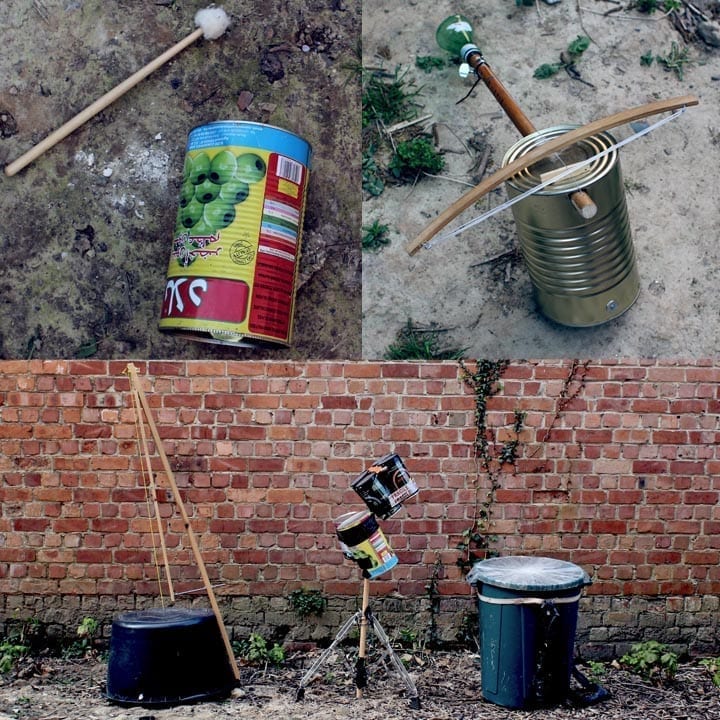
PAN M 360: On to the instruments themselves – I imagine that the basic percussion and even the washtub bass were pretty straightforward to build. On the other hand, the PVC-pipe wind instruments must have been more challenging, especially with different scales to consider.
RS: Each instrument requires a specific building approach. Things that look easy at first glance can still meet with unexpected difficulties. Even basic percussion, like making a drum skin from plastic tape, is not as straightforward as you would imagine. If you would span all the strips in the same direction, you would get a bland and not durable result, whereas, when spanned diagonally they will reinforce each other.
The PVC flutes and clarinets are especially challenging. There is a lot to be calculated and a great deal of trial and error involved before you can get good results. By using tape to cover up incorrectly drilled holes, I found a way to make up to three or four experimental models out of one pipe, thus drastically reducing the amount of PVC that is ultimately wasted. In order to keep things as eco-friendly as possible, I am now considering building my future pilot models out of papier-mâché.
PAN M 360: You’ve also been making lamellophones, thumb pianos and such, out of discarded kitchen knives. You know, it just occurred to me… do any of you have any emergency medical training? I mean, just in case?
RS: I have basic first-aid training with follow-up sessions once a year. Since I lead workshops in lutherie sauvage [unorthodox instrument-building], it’s useful to have some basic knowledge of first aid. Luckily, I rarely have to put this to practice. Touch wood.
MM: Just saying, these knives hurt like hell when you play them a bit too long. But for now, never had a real cut.
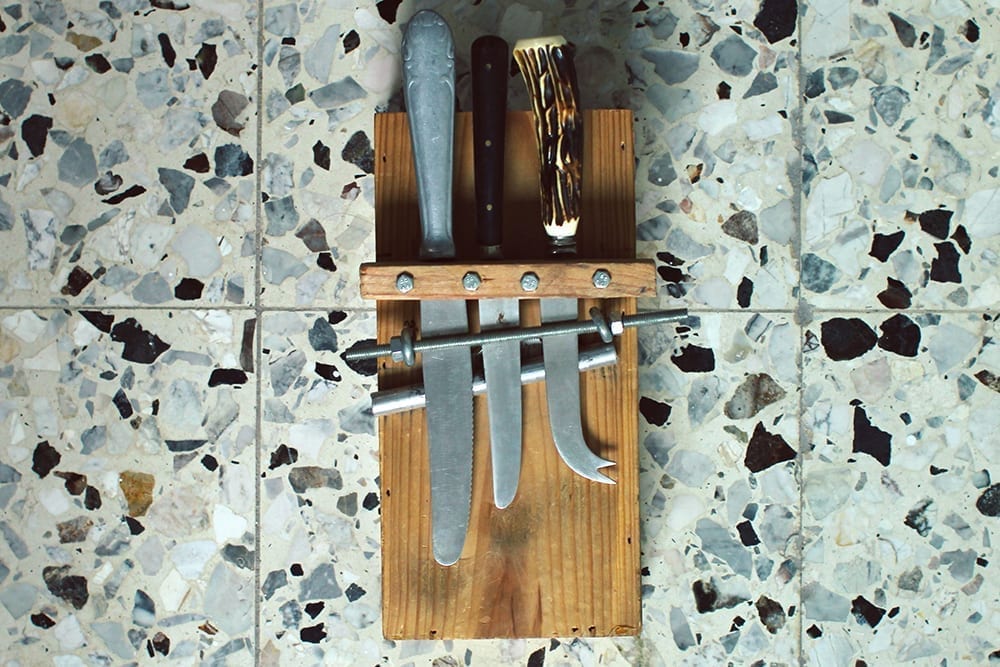
PAN M 360: Following consideration of unhappy accidents, let’s talk about the happy kind. Instrumentation built from found scrap must necessarily have limitations compared to those manufactured to professional specifications. However, I’d imagine they offer a lot of unexpected, and useful, surprises along the way.
RS: About limitations, I can’t state it better than Georges Braque did in his collection of aphorisms Le Jour et La Nuit – “Les moyens limitées engendrent des formes nouvelles, invitent à la création, font le style” [“limited means lead to new forms, invite creativity, make the style”]. Sometimes the idea is not so much to expand the borders but rather to obtain the maximum results within them.
TV: Those borders or limitations are what I enjoy so much in this band. No complicated synthesizers to lose my mind over. You know, it’s a relief to only have a couple of notes and sounds per instrument.
RS: An example of this can be found in the clarinets I make. Since I haven’t found a way to make a proper working keying mechanism yet, some of them are limited to a pentatonic scale. But on the positive side, this enables us to really dig deep into the possibilities this pentatonic scale has to offer, both melodically and harmonically. Plus it encourages us to maybe think more rhythmically about a solo.
A very useful concept has been the idea of a slide clarinet, kind of hybrid of clarinet and trombone. These seem to have been commercially available during the 1920s but have been forgotten since. Our models are made with two pieces of PVC tubing of different diameters, but I have seen some alternative approaches to such clarinets by Ralph Carney and Bart Hopkin, which also spark my interest.
Another find was that certain imperfections in a violin bridge caused a loud and raunchy additional buzz, which we used to our advantage. We later discovered that this very same concept was already used in the medieval and renaissance instrument tromba marina. This was however used to obtain certain harmonics on the string, instead of creating a loud buzz.
An advantage of the PVC instruments is that they can even be used in the water. Maybe we should try that out during a swim party in summer.
TV: In Canada?
PAN M 360: Rik, you have a long history of pedagogical music workshops, a very different musical practice from entertaining the public with concerts and records. Has that aspect of your collective curriculum vitae affected how and why you do schroothoop?
RS: Well, I was a performer – playing mainly the different members of the saxophone family – long before even considering doing the workshops. Regardless of playing in a professional band and touring internationally, I still needed a job on the side to make ends meet. So in the end, I decided that it would be nice if this day job could also have a link with music. That’s how I came to organize music workshops.
The bands I play with and the workshops I host are really two different worlds. Schroothoop was created as a band of its own, not as a demonstrational orchestra to promote the workshops. But of course there are some links. The workshops have enabled me to experiment with many types of instruments and made it possible to build a big collection of working gear, some of which ended up being used in schroothoop.
